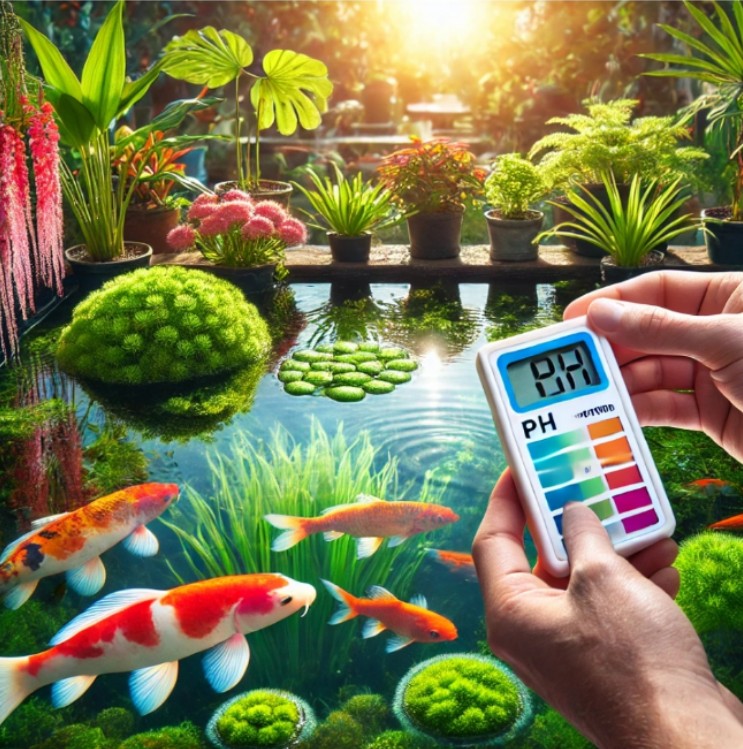Maintaining the right pH level is essential for a healthy pond. pH levels determine water acidity or alkalinity, and they influence everything from fish health to plant growth. Here’s a guide to understanding and managing pH for a thriving pond environment.
1. Why pH Levels Matter for Fish and Plant Health
pH levels affect almost every aspect of pond life. Most ponds should maintain a pH between 6.5 and 8.5, which is ideal for koi and other fish. Extreme pH levels can stress fish, compromise immune health, and impact plant growth. Keeping pH balanced allows fish to live comfortably and promotes plant health.
Water quality directly affects koi behavior and health. For additional information on keeping fish healthy, check out our Elevating Koi Well-Being guide.
2. Key Factors That Influence pH Levels
pH levels fluctuate due to various factors, including:
- Decaying Organic Material: Leaves, fish waste, and plant debris decay over time, releasing acids that can lower pH.
- Water Source: Water from taps, rain, or groundwater often has varying pH, which can affect your pond’s balance.
- Algae and Plant Life: Photosynthesis from plants and algae affects pH levels, often causing fluctuations during the day.
Regularly monitoring pH allows you to address shifts promptly. Learn more about monitoring key water parameters in our Ammonia and Nitrite Management guide.
3. Testing and Adjusting pH Levels
Testing pH regularly is essential for maintaining stability. Simple test kits or digital meters can help you measure pH accurately. Test your pond’s pH in the morning, as levels often change throughout the day due to plant photosynthesis.
If your pond’s pH drifts too high or low, consider using natural solutions to adjust it. Crushed limestone or baking soda can help raise pH, while peat moss is effective for lowering it. Avoid rapid changes, as sudden shifts can stress fish. For tips on stabilizing pH, explore our water hardness and pH stability guide.
4. Maintain Balance with Beneficial Plants
Plants help regulate pH naturally by absorbing nutrients and reducing organic waste. Adding oxygenating plants like anacharis supports pH stability and improves oxygen levels, benefiting fish and bacteria alike.
In addition to improving water quality, plants create a balanced ecosystem that reduces the need for frequent pH adjustments. For ideas on ideal plants for pond health, refer to our guide on the Best plants for your Koi pond.
Conclusion
Maintaining the correct pH level in your pond is crucial for fish health, water quality, and overall pond stability. By monitoring pH regularly, making gradual adjustments, and incorporating beneficial plants, you can keep your pond in optimal condition. A balanced pH creates a vibrant and thriving ecosystem, ensuring your pond remains beautiful and healthy year-round.

